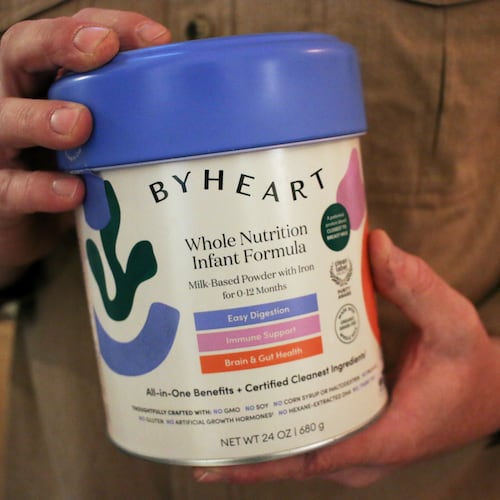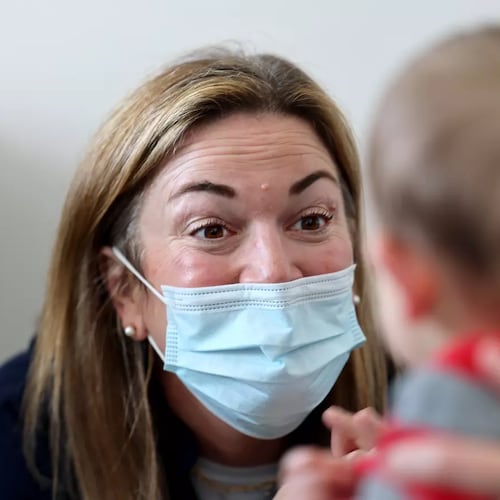As cases of lead poisoning linked to applesauce pouches have continued to climb, the number of children in Georgia sickened now includes 13 confirmed cases, according to the latest figures from the Georgia Department of Public Health.
DPH spokeswoman Nancy Nydam told The Atlanta Journal-Constitution that there are also 9 probable cases and one suspected case. The total number of 23 cases is up from 20 cases in early January. An age breakdown of the Georgia cases was not available Monday, but Nydam said most or all are children.
The recalled pouches — sold under three brands: WanaBana, Schnucks and Weis — have been linked to 354 confirmed or suspected illnesses in 41 states, primarily in children, according to the latest information available from the Centers for Disease Control and Prevention.
Cases of lead poisoning began appearing in late October and the products were recalled Nov. 9. Despite the recall, some of the products remained on the shelves of some Dollar Stores in the U.S. as recently as Dec. 19, according to the U.S. Food and Drug Administration.
Nydam said state health investigators are revisiting cases back to November 2022, and consulting with the parents of previous cases to see if the applesauce may be the cause of the poisoning.
Dr. Hugo Scornik, a pediatrician in Conyers who previously led the Georgia chapter of the American Academy of Pediatrics, said he thinks awareness of the poisoning is likely the biggest factor in leading to more cases to arise so long after the recall was announced.
Lead poisoning can come from other environmental sources and can last a long time in the body. When a child who gets screened for lead poisoning, eating the recalled applesauce may be just one factor considered in determining the source, and an investigation can take some time to rule out other causes.
Scornik said most children poisoned by lead have no obvious immediate symptoms and a blood test is needed to determine whether a child has been poisoned. But even mild lead poisoning can cause learning problems later in life, he said.
There’s no safe level of lead exposure, and lead is particularly dangerous to children because their growing bodies absorb more lead than adults and their brains and nervous systems are more sensitive to the damaging effects of lead.
U.S. food inspectors found “extremely high” levels of lead in cinnamon at a plant in Ecuador that made the applesauce pouches, according to the FDA.
Cinnamon tested from the plant had lead levels more than 2,000 times higher than the maximum level proposed by the FDA, officials said. The samples tested came from ground or powdered cinnamon from Negasmart, an Ecuadorian company that supplied the spice to Austrofoods, which made the pouches.
In addition to the lead contamination, the FDA reported earlier this month they also found high levels of chromium in their testing of the recalled products. Chromium is an essential mineral found in foods and supplements, but some forms can be toxic at high levels. According to the agency, “Due to limitations in available testing methods, FDA was not able to definitively determine the form of chromium in the cinnamon apple puree sample.”
There is no medicine that reverses the harm that has already occurred from lead poisoning and there is no specific antidote to treat chromium exposure. A chemical process called chelation therapy helps remove heavy metals like lead from the blood, but the therapy has serious side effects that could potentially be life-threatening. Doctors only use chelation for very high blood lead levels.
The FDA advises parents whose children may have eaten the recalled products to watch for symptoms of exposure to either lead or chromium. Often, a child with lead poisoning shows no initial signs or symptoms. But symptoms of lead toxicity can include headache; abdominal pain or colic; vomiting and anemia. Longer-term exposure could result in behavioral changes such as irritability; lethargy; difficulty concentrating, fatigue and weight loss.
Symptoms of chromium exposure may be nonspecific, according to the FDA. Consuming a high level of chromium exceeding dietary recommendations may result in abdominal pain, nausea, vomiting, diarrhea and anemia, among other effects.
DPH send lead inspectors to do home inspections for the suspected lead poisoning cases here. Soil and paint tests are needed to rule out other potential sources before a case can be confirmed.
All children enrolled in Medicaid are required to get tested for lead between the ages of 12 and 24 months and between the ages of two years and 6 years of age. Most lead poisoning in children results from eating chips of deteriorating lead-based paint, according to the Mayo Clinic. Lead-based paints for homes, children’s toys and household furniture have been banned in the United States since 1978. But lead-based paint is still on walls and woodwork in many older homes and apartments.
The FDA continues to investigate how the cinnamon was contaminated. One theory is that the cinnamon may have been contaminated on purpose for economic reasons, agency officials said, meaning the lead could be added to the food to to boost its value by adding color and weight.
What should you do?
If you’re not sure if you or a member of your family has consumed the product, go to the FDA’s website for a full list of affected products
If you suspect that you or your child may have been exposed to lead, you should talk to your healthcare provider about getting a blood lead test. Healthcare providers and most local health departments can test for lead in the blood. Many private insurance policies cover the cost of testing for lead in the blood. The cost of blood lead testing for children enrolled in Medicaid is covered by the Centers for Medicare & Medicaid Services. Source: Centers for Disease Control and Prevention
About the Author
Keep Reading
The Latest
Featured


